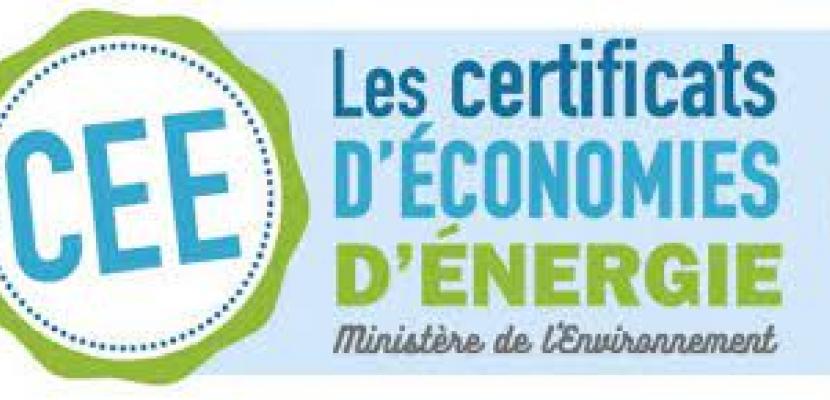Image

Target energy saving certificates quotas (CEEs) fees to vulnerable households
Published on 28 July 2021

France
This is the good practice's implementation level. It can be national, regional or local.
About this good practice
The problem of increasing energy demand has created the need to regulate the energy market. Then, the CEE scheme, created in 2005 by French goverment, is one of the main instruments for regulating the energy market to involve energy suppliers in the demand reduction strategy.
This system is based on a three-year obligation impose by the public authorities on energy suppliers (under legal duty) to make energy savings which is measured in CEEs: 1 kWh Cumac (for cumulative over the life of the system and actualised) of final energy = 1 CEE.
The CEEs are allocated, by the services of the Ministry of Energy, to eligible actors carrying out energy saving operations. These actions can be pursued in every activity sector they have identified to make energy savings. Standardised operation sheets, defined by decree, are drawn up to facilitate the setting up of energy saving actions. Some renewable energies are eligible for CEE, such as efficient heat pumps, wood-fired heating systems or solar thermal systems.
The law on energy transition for green growth (2015) has introduced a new obligation for the CEE scheme's obligated parties, to be carried out exclusively for the benefit of low-income and very low-income households (precariousness CEEs). This policy has a strong social dimension. For the 4th period (exceptionally prolonged over 4 years 2018-2021): the target is 2,133 TWh cumac, of which 733 TWh cumac for households in fuel poverty (preacairousness CEEs).
This system is based on a three-year obligation impose by the public authorities on energy suppliers (under legal duty) to make energy savings which is measured in CEEs: 1 kWh Cumac (for cumulative over the life of the system and actualised) of final energy = 1 CEE.
The CEEs are allocated, by the services of the Ministry of Energy, to eligible actors carrying out energy saving operations. These actions can be pursued in every activity sector they have identified to make energy savings. Standardised operation sheets, defined by decree, are drawn up to facilitate the setting up of energy saving actions. Some renewable energies are eligible for CEE, such as efficient heat pumps, wood-fired heating systems or solar thermal systems.
The law on energy transition for green growth (2015) has introduced a new obligation for the CEE scheme's obligated parties, to be carried out exclusively for the benefit of low-income and very low-income households (precariousness CEEs). This policy has a strong social dimension. For the 4th period (exceptionally prolonged over 4 years 2018-2021): the target is 2,133 TWh cumac, of which 733 TWh cumac for households in fuel poverty (preacairousness CEEs).
Resources needed
Their implementation lead very few additional costs for public funds as the obligation is supported by the energy suppliers.
Currently, the cost of CEE precariousness is about 8 €/MWh cumac according to the Emmy base.
Currently, the cost of CEE precariousness is about 8 €/MWh cumac according to the Emmy base.
Evidence of success
Each energy supplier has to meet different targets for the standard CEE and the precarity CEE, which can be traded on a specific market. The prices of these two types of certificates are different (average price around 6 €/MWhcumac for the precariousness CEE in 2020).
For the year 2020, more than 236 TWh cumac of precariousness CEE have been delivered by the national contact point. This represents more than 1.4 billion euros paid to vulnerable households to carry out their energy saving work.
For the year 2020, more than 236 TWh cumac of precariousness CEE have been delivered by the national contact point. This represents more than 1.4 billion euros paid to vulnerable households to carry out their energy saving work.
Potential for learning or transfer
The CEE schemes are constantly improved as they are implemented: this tool, whose ambition is growing and effectiveness improving, is fixed according to the needs of the field.
The CEE scheme is already applied in several European countries (Itlay, Denmark) and in the rest of the world.
The focus on targetingdirected towards vulnerable households makes it possible to reduce fuel poverty and remaining costs for these households, while considering the targeted renewable energy equipment. The effort to mobilise vulnerable groups is supported by the energy companies. This scheme is therefore quite effective and can be replicated in other countries.
The CEE scheme is already applied in several European countries (Itlay, Denmark) and in the rest of the world.
The focus on targetingdirected towards vulnerable households makes it possible to reduce fuel poverty and remaining costs for these households, while considering the targeted renewable energy equipment. The effort to mobilise vulnerable groups is supported by the energy companies. This scheme is therefore quite effective and can be replicated in other countries.
Further information
Website
Good practice owner
You can contact the good practice owner below for more detailed information.
Organisation
French Ministry of the Ecological Transition

France
Ile-de-France
Contact
project manager
